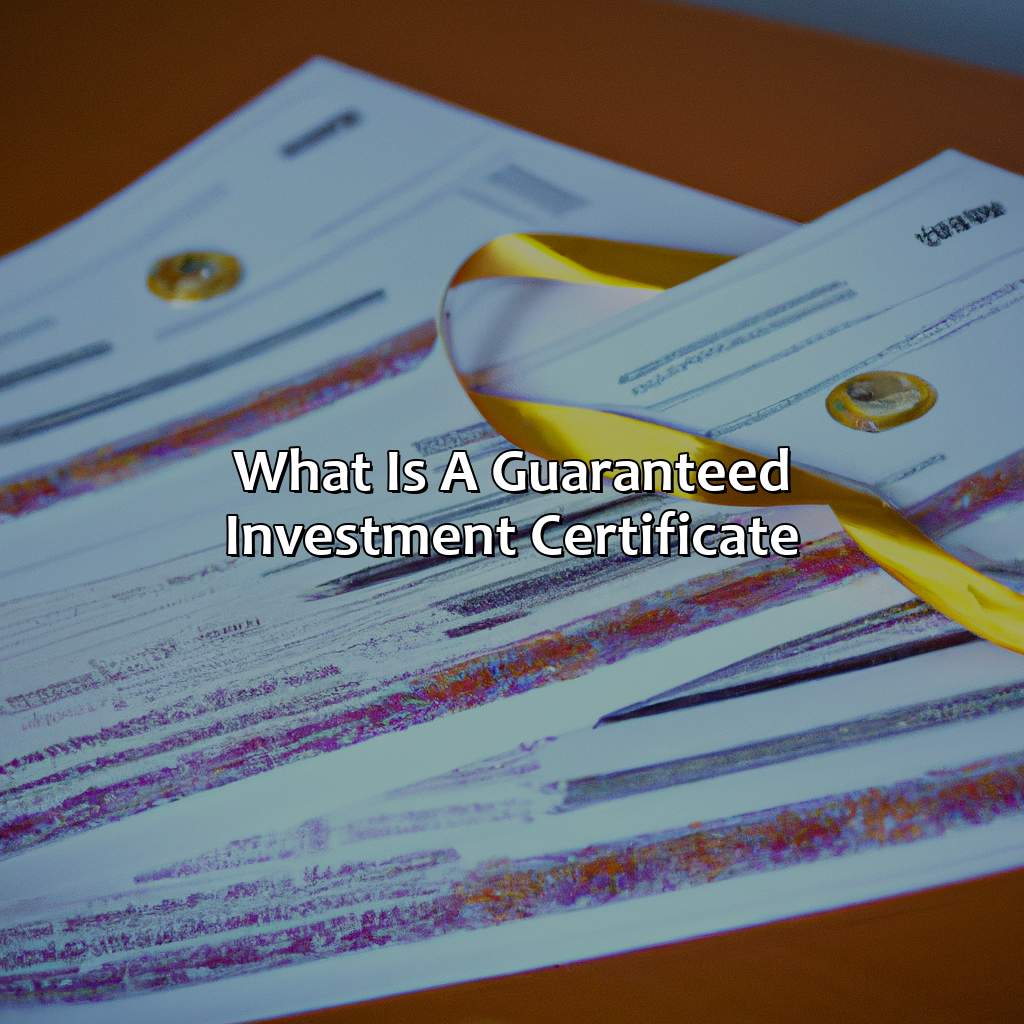What Is A Guaranteed Investment Certificate?
Key Takeaway:
- A Guaranteed Investment Certificate (GIC) is a type of investment that offers a guaranteed rate of return over a specified time period.
- GICs are low-risk investments that are ideal for investors who prioritize safety and security over higher potential returns.
- There are two main types of GICs: fixed-rate GICs, which offer a guaranteed rate of return over a fixed period of time, and market-linked GICs, which offer returns based on the performance of a specific index or basket of stocks.
Are you considering investing your hard-earned money but not sure what to do with it? A guaranteed investment certificate (GIC) is a safe, low-risk option that can help you grow your savings. You may benefit from this secure investment and its guaranteed returns.
What is a Guaranteed Investment Certificate?
Guaranteed investment certificates refer to fixed-term investments, offered by banks or credit unions, that guarantee principal and pay a set fixed interest rate upon maturity. These investments are low-risk but low-return in nature and are suitable for those who prioritize capital preservation over high returns. They can range from six months to five years or more, with longer terms offering more significant returns. However, early withdrawals can come with penalties and reduced interest rates.
Overall, GICs are a secure way to invest money for those with a low-risk tolerance. Don’t miss out on the opportunity to secure your savings with GICs. Consult with your financial advisor to determine whether it is the right investment strategy for you.
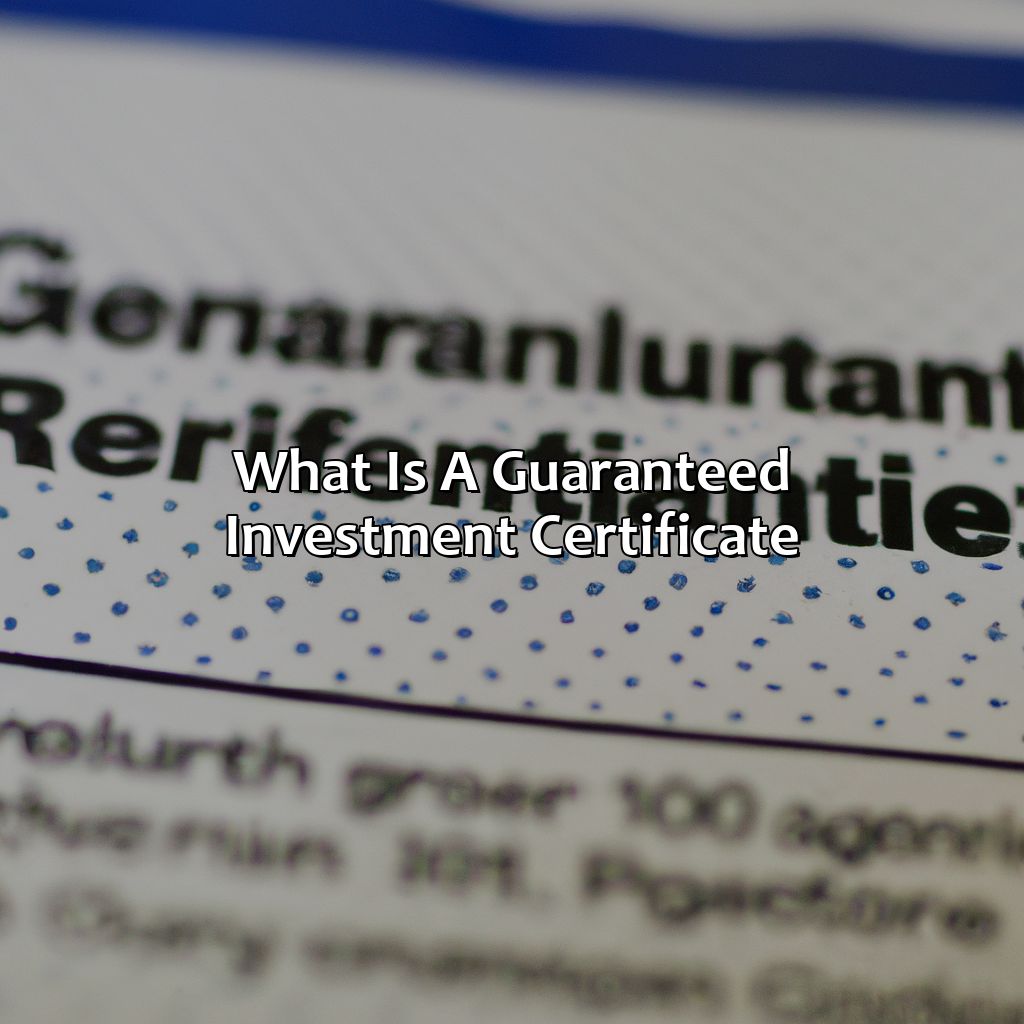
Image credits: retiregenz.com by David Woodhock
Definition of a Guaranteed Investment Certificate (GIC)
A Guaranteed Investment Certificate (GIC) is a fixed-term investment issued by a financial institution. The investor agrees to lend money to the institution in exchange for a guaranteed interest rate and return of capital at maturity. The longer the investment term, the higher the interest rate. GICs are low risk and insured by the Canadian Deposit Insurance Corporation for up to $100,000 per investment. They are an ideal investment for those who want a low risk option or prefer to invest in short-term debt securities.
GICs come in various forms, including cashable, non-cashable, and redeemable. Cashable GICs allow early withdrawal without penalty, non-cashable GICs have a higher interest rate but do not allow early withdrawal, and redeemable GICs have varying options for early withdrawal.
A unique feature of GICs is that they can be held in registered accounts, such as a Tax-Free Savings Account (TFSA) or Registered Retirement Savings Plan (RRSP). This allows investors to maximize their returns while ensuring tax efficiency.
A true story that illustrates the benefits of GICs involves a retired couple who wanted a low-risk investment for their nest egg. They decided to invest their savings in a long-term GIC, which provided a higher interest rate than their savings account. This helped them to earn more income without taking on higher risk in the stock market.
In summary, GICs are a low risk investment option that guarantee the return of capital and provide a fixed rate of return. They come in various forms and can be held in registered accounts, allowing for tax efficiency. A proper understanding of GICs can help investors to make sound financial decisions for their portfolios.
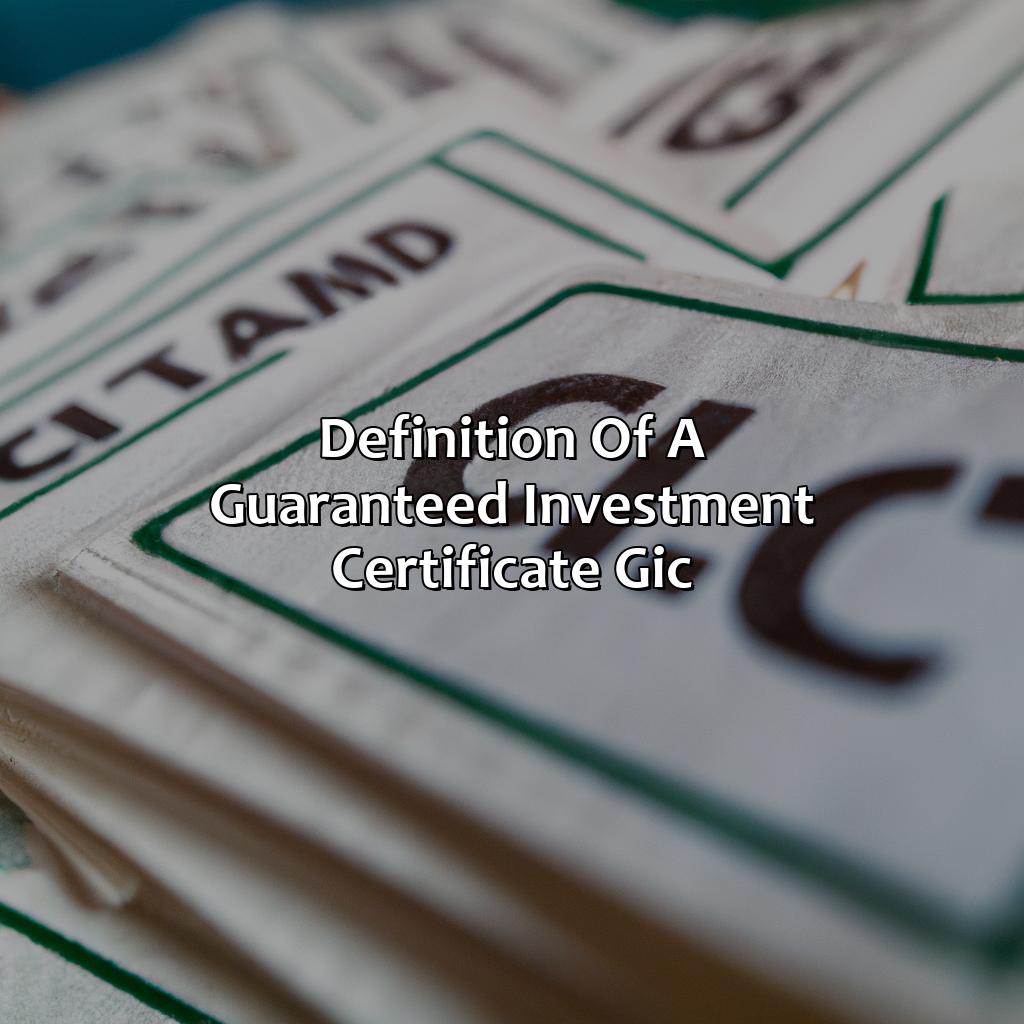
Image credits: retiregenz.com by Adam Jones
Types of Guaranteed Investment Certificates
In the realm of investment, knowing the various types of guaranteed investment certificates (GICs) is crucial for making informed decisions. Here are six common types of GICs:
- Fixed-Rate GICs: These instruments promise a fixed interest rate over a specified period, which usually ranges from one to ten years.
- Variable-Rate GICs: These provide returns that vary depending on the market trends. Usually, the rate is tied to some benchmark rate like a VRSP, so investors can earn a substantial return if the market is good.
- Redeemable GICs: These offer investors the option to redeem their investment before maturity, often at a reduced rate.
- Non-Redeemable GICs: These do not allow investors to withdraw their investment before maturity. They usually offer a higher interest rate in return.
- Market-Linked GICs: These instruments use complex financial strategies to expose investors to equity markets while preserving their capital.
- Cashable GICs: These are flexible GICs that allow investors to cash out anytime without penalties, albeit at a lower rate.
It is worth noting that certain GICs often require a minimum investment and may have varying levels of liquidity and flexibility.
Furthermore, GICs are not necessarily the only or best investment choice. Consider your financial goals and situation before investing.
A friend once invested her entire savings in a five-year GIC without considering her liquidity requirements. She eventually faced a significant financial challenge that required immediate cash, but her entire investment was locked down. She missed out on opportunities and incurred penalties that ate into her profits.
In summary, knowing the diverse types of GICs and their unique features is key to making informed and prudent investment decisions.
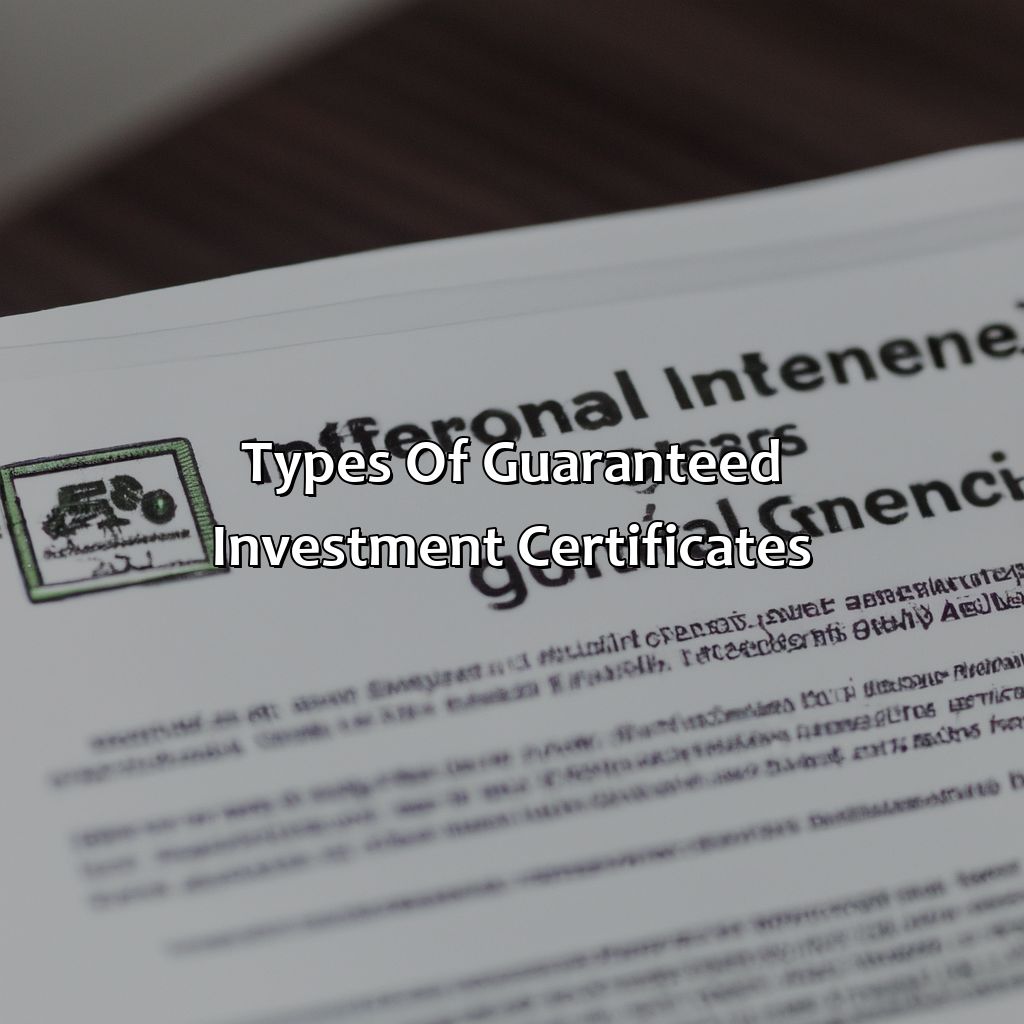
Image credits: retiregenz.com by James Arnold
Benefits and Risks of Guaranteed Investment Certificates
Guaranteed Investment Certificates (GICs) provide a high degree of safety to investors, as they guarantee the principal investment and offer fixed returns over a set period. However, as with any investment, there are certain benefits and risks associated with GICs.
- Benefits:
- • Guaranteed Returns: Investors receive fixed, predictable returns, regardless of market fluctuations.
- • Safety of Principal: The initial investment made by an individual is guaranteed, reducing the risk of loss
- • No Investment Experience Required: GICs are straightforward and easy to understand, making them a suitable investment option for those with less investment experience.
- • Diversification: Investors can diversify their investment portfolio by holding a mix of GICs with varying terms and interest rates.
- Risks:
- • Low Returns: GICs typically offer lower returns than other investment options, such as stocks or mutual funds.
- • Limited Liquidity: Depending on the terms of the GIC, investors may face penalties for withdrawing funds before the maturity date.
- • Inflation Risk: The fixed returns offered by GICs may not keep up with inflation rates, resulting in a decrease in the purchasing power of the investment.
- • Interest Rate Risk: If interest rates rise during the term of the GIC, the fixed rate offered by the certificate may become less attractive relative to other investment options.
Investors should also consider additional options, such as the length of the term of the GIC, the amount of the deposit, and the timing of maturity. By evaluating these factors thoroughly, investors can make informed decisions when selecting GICs for their investment portfolio.
To avoid missing out on the benefits of GICs, investors should explore their options thoroughly and work closely with financial advisors to assess the risks and opportunities associated with GICs. With a clear understanding of its benefits and risks, GICs can be a valuable addition to an investor’s broader investment strategy.
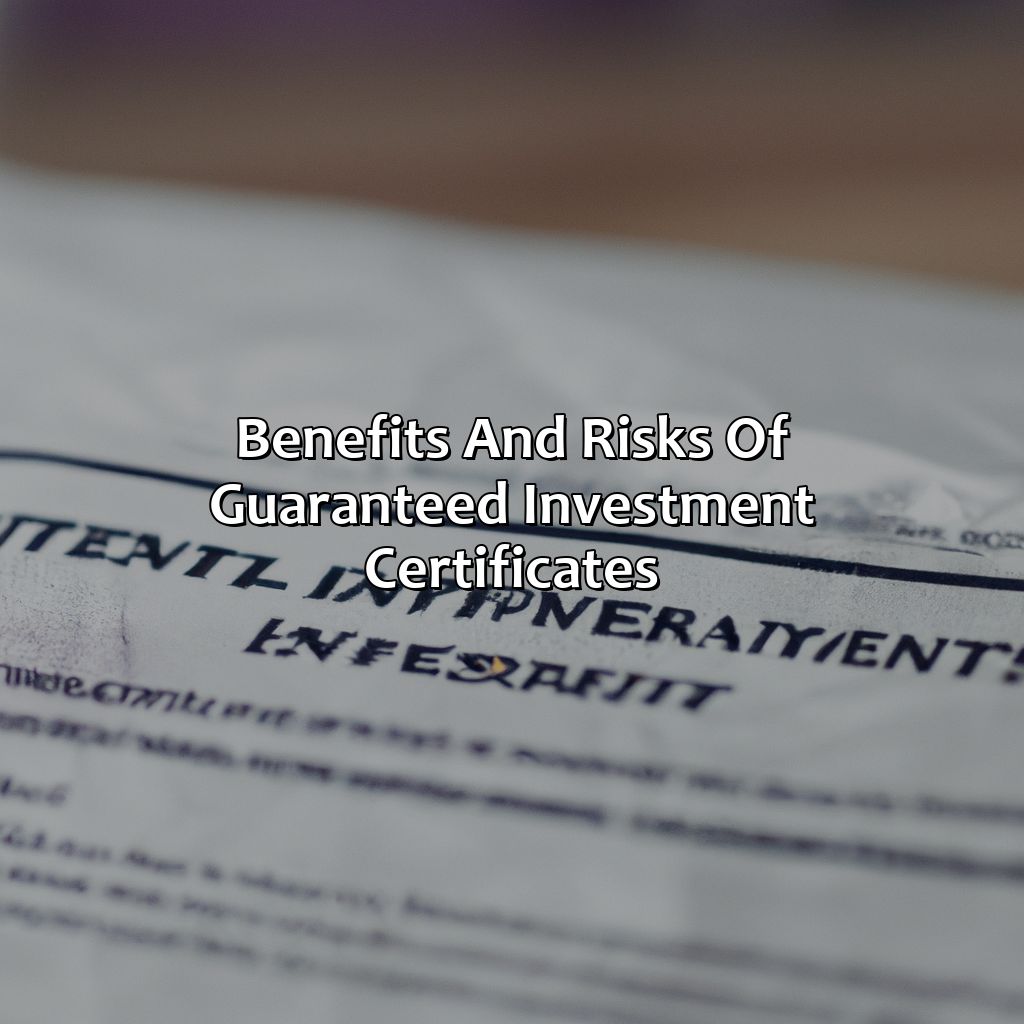
Image credits: retiregenz.com by David Duncun
Choosing the Right Guaranteed Investment Certificate for You.
Choosing the Appropriate Guaranteed Investment Certificate for You
A Guaranteed Investment Certificate (GIC) is a low-risk investment tool that provides a guaranteed rate of return for a specific period. The question is, how can you choose the most suitable GIC for your financial goals?
Here are some crucial factors to consider before investing in a GIC:
- Determine the length of investment period you prefer. GICs offer terms as short as 30 days up to as long as ten years or more.
- Evaluate the interest rate that each GIC type offers. Shorter terms offer a lower return, while longer periods give higher rates.
- Determine the minimum investment required for each GIC type. This is essential to consider since some GICs have higher minimum investments than others.
- Look out for GIC specials or promotional rates. These promotions offer a higher interest rate than standard rates.
- Evaluate the early redemption policy for each GIC type. Early redemption fees usually apply when you withdraw your funds before the end of the term.
It is crucial to be knowledgeable about all available GIC options to make an informed decision. Factors like money goals, withdrawal needs, and investment horizon should be considered in picking the appropriate GIC for your financial plan.
According to Forbes, the Canadian Bankers Association reported that Canadians deposited $812.7 billion in guaranteed investment certificates in 2019.

Image credits: retiregenz.com by Adam Jones
Some Facts About Guaranteed Investment Certificates:
- ✅ Guaranteed Investment Certificates (GICs) are low-risk investments that offer a fixed rate of return over a set period of time. (Source: RBC)
- ✅ GICs are offered by banks, credit unions, and other financial institutions. (Source: CIBC)
- ✅ The longer the term of the GIC, the higher the interest rate typically is. (Source: TD Canada Trust)
- ✅ GICs can be cashable or non-cashable, meaning that the investor can withdraw their funds before the maturity date or not. (Source: BMO)
- ✅ GICs are insured by the Canada Deposit Insurance Corporation (CDIC) for up to $100,000 per account. (Source: Government of Canada)
FAQs about What Is A Guaranteed Investment Certificate?
What is a guaranteed investment certificate?
A guaranteed investment certificate (GIC) is a secure investment that provides a predetermined rate of return for a fixed term, ranging from 30 days to five years.
How does a guaranteed investment certificate work?
When you purchase a GIC, you are essentially lending money to a financial institution for a specified period. In return, the institution pays you guaranteed interest on your investment.
Are guaranteed investment certificates safe?
Yes, GICs are generally considered a safe investment because they are backed by the Canadian Deposit Insurance Corporation (CDIC) up to $100,000 per depositor per insured category.
What are the advantages of investing in a guaranteed investment certificate?
Some advantages of investing in a GIC include guaranteed return on investment, low risk, and a fixed rate for the term of the investment.
What are the disadvantages of investing in a guaranteed investment certificate?
Some disadvantages of investing in a GIC include lower returns compared to other investments, rigid rules for accessing your funds, and potential penalty fees for early withdrawal.
Can I withdraw my money early from a guaranteed investment certificate?
Most GICs have rigid rules for accessing your funds, including penalties for early withdrawal. It is important to read the terms and conditions carefully before investing in a GIC.
